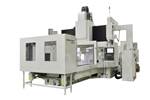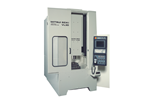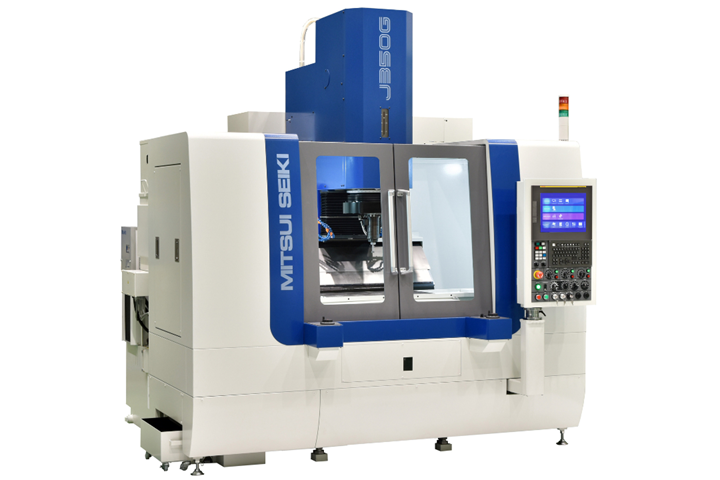Enhanced Jig Grinder Features Meet Manufacturing Flexibility Requirements
The Mitsui Seiki J350G offers mold and die-makers one of the largest available infeed stroke ranges to grind multiple features automatically without changing wheels, a smaller footprint and more advanced CNC controls.
Share
The high-performance Mitsui Seiki J350G jig grinder offers a combination of application flexibility, accuracy, reliability and operator-friendly operation, particularly for companies involved in mold or die-making where jig grinders can be used, for example, for through holes, shut-off or molding details.
The J350G’s grinding infeed stroke is reported to be the largest available among competing machines, with a U-axis range of -3 mm to +50 mm relative to the spindle center. This provides the flexibility to grind small- and large-diameter holes, as well as multiple features, using a single wheel in a continuous, automatic mode. The machine has a 2,220 × 2,610 mm footprint, 50% smaller than that of the previous model to maximize floor space efficiency, a work surface of 700 × 350 mm and a 300-kg permissible table load.
According to Mitsui Seiki, many legacy jig grinders are currently coming offline in shops and manufacturers are looking to replace them with those featuring advanced CNC controls. To that end, the J350G’s Fanuc 31i-B control has a 15" touch panel LCD screen and is preloaded with G-MAPS conversational-style programming software. The control also permits easy manual programming via graphic icons, data entry or conventional methods.
“Jig grinders are the most common machine type in small shops and large factories. Most have at least one. Our CNC J350G provides the ability to grind a wide variety of features automatically, without changing wheels,” Mitsui Seiki USA chief operating officer Bill Malanche, says. “It provides the flexibility required in today’s manufacturing environment.”
To maximize accuracy, the J350G’s X and Y axes are hand scraped and incorporate needle roller bearings. Left and right slide ways are V-F flat shaped, and the Y-axis (spindle head motion) is V-V shaped to maximize positioning accuracy. Built-in, custom-designed Heidenhain scales contribute to ±0.0007 mm accuracy on the X, Y and Z axes.
Related Content
-
3D Printing Enables Better Coolant Delivery in Milling Operations
Just like 3D printing enabled conformal cooling channels in molds, additive manufacturing is now being used to optimize coolant delivery in cutting tools.
-
OEE Monitoring System Addresses Root Cause of Machine Downtime
Unique sensor and patent-pending algorithm of the Amper machine analytics system measures current draw to quickly and inexpensively inform manufacturers which machines are down and why.
-
Leading Mold Manufacturers Share Best Practices for Improving Efficiency
Precise Tooling Solutions, X-Cell Tool and Mold, M&M Tool and Mold, Ameritech Die & Mold, and Cavalier Tool & Manufacturing, sit down for a fast-paced Q&A focused on strategies for improving efficiencies across their operations.
















.jpg;maxWidth=300;quality=90)
